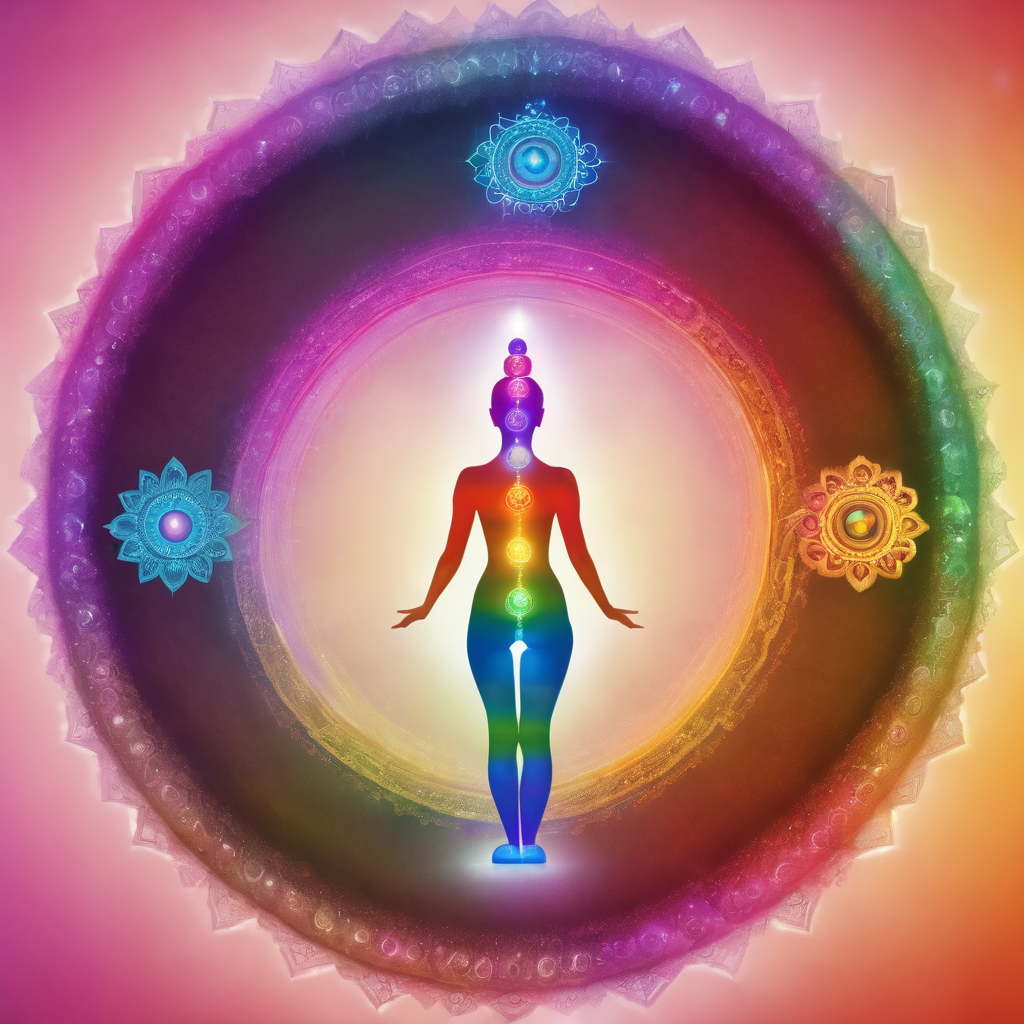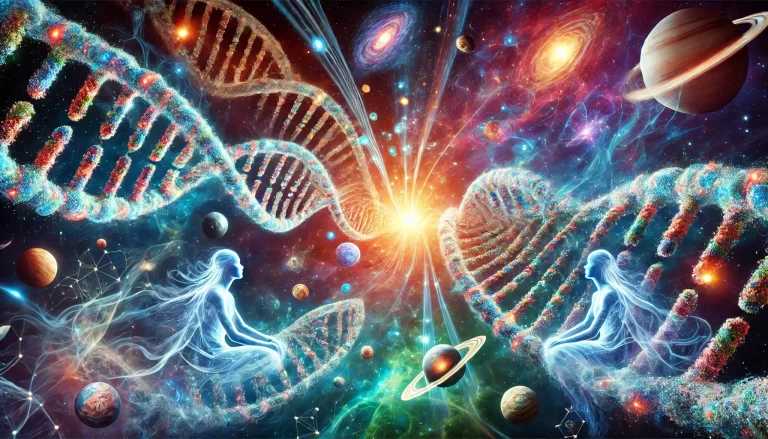Exploring the Seven Chakras: A Journey into the Energy Centres of the Human Vehicle

The concept of chakras, derived from ancient Indian spiritual traditions, is a profound and intricate system that explores the energy centres within the human body. These seven chakras are believed to be interconnected, influencing our physical, mental, and spiritual well-being. In this first part of the article, we will delve into the definition, location, colour, associated gland, and capital sin linked to each chakra, while also distinguishing between the lower and upper chakras.
- Root Chakra (Muladhara):
- Definition: The foundation of the chakra system, represents our grounding and connection to the Earth.
- Location: Base of the spine.
- Colour: Red.
- Gland: Adrenal glands.
- Capital Sin: Sloth.
- Distinction: Associated with minerals and the physical realm, it signifies stability and survival instincts.
- Sacral Chakra (Svadhisthana):
- Definition: The seat of creativity, influences our ability to enjoy life’s pleasures.
- Location: Below the navel.
- Colour: Orange.
- Gland: Gonads.
- Capital Sin: Envy.
- Distinction: Connected to plants and the emotional realm, it symbolizes growth and reproduction.
- Solar Plexus Chakra (Manipura):
- Definition: The centre of personal power and confidence, governs our self-esteem and willpower.
- Location: Upper abdomen.
- Color: Yellow.
- Gland: Pancreas.
- Capital Sin: Greed.
- Distinction: Tied to animals and the emotional realm, it signifies will power.
- Heart Chakra (Anahata):
- Definition: The bridge between the lower and upper chakras, represents love, compassion, and connection.
- Location: Center of the chest.
- Color: Green.
- Gland: Thymus.
- Capital Sin: Lust.
- Distinction: Corresponds to humans and the mental realm, symbolizing intellect and balance.
- Throat Chakra (Vishuddha):
- Definition: The center of communication and self-expression, influences our ability to speak our truth.
- Location: Throat.
- Color: Blue.
- Gland: Thyroid.
- Capital Sin: Gluttony.
- Distinction: Associated with communication, it signifies the expression of our reality without deviation. Honesty is the key aspect here.
- Third Eye Chakra (Ajna):
- Definition: The seat of intuition and insight, it is linked to our ability to perceive beyond the physical senses.
- Location: Forehead, between the eyes.
- Colour: Indigo.
- Gland: Pituitary gland.
- Capital Sin: Wrath.
- Distinction: Represents the connection the etheric realms, emphasizing intuition and spiritual awareness.
- Crown Chakra (Sahasrara):
- Definition: The pinnacle of the chakra system, it is associated with enlightenment and the realization of our higher self.
- Location: Top of the head.
- Colour: Violet or white.
- Gland: Pineal gland.
- Capital Sin: Pride.
- Distinction: Pertains to light humans with faculties beyond the senses, symbolizing cosmic consciousness and the ineffable divine connection.
Understanding the seven chakras provides a holistic perspective on the intricate balance between the physical, emotional, and spiritual aspects of our being. By exploring these energy centres, individuals can embark on a journey of self-discovery and inner harmony, aiming to align and balance their chakras for overall well-being and spiritual enlightenment.
Etheric Visualisation of the Chakras
In the intricate tapestry of the chakra system, the number of petals associated with each energy centre plays a significant role in understanding the frequency and vibrational quality of these spinning vortices. These petals, often visualized as unfolding flower-like structures, contribute to the creation of an intricate etheric mandala when viewed from above. This mandala, a sacred geometric pattern, represents the harmonious interplay of energies within and around an individual. Let’s explore this concept in the context of the previously discussed seven chakras.
- Root Chakra (Muladhara):
- Petals: Four.
- Mandala Interpretation: The four petals signify the foundational nature of the Root Chakra. The energy here is grounded, stable, and resonates with the slow and steady rhythms of the Earth.
- Sacral Chakra (Svadhisthana):
- Petals: Six.
- Mandala Interpretation: With six petals, the Sacral Chakra’s mandala unfolds in a balanced and fluid manner, reflecting the dynamic interplay of emotions and creative energies.
- Solar Plexus Chakra (Manipura):
- Petals: Ten.
- Mandala Interpretation: The ten petals of the Solar Plexus Chakra create a vibrant and powerful mandala, representing the transformative and energetic qualities associated with personal power and will.
- Heart Chakra (Anahata):
- Petals: Twelve.
- Mandala Interpretation: The Heart Chakra’s mandala, with its twelve petals, radiates a harmonious energy of love and compassion, symbolizing balance and unity.
- Throat Chakra (Vishuddha):
- Petals: Sixteen.
- Mandala Interpretation: The sixteen-petaled mandala of the Throat Chakra symbolizes the expansive nature of communication and self-expression, creating a dynamic and intricate pattern.
- Third Eye Chakra (Ajna):
- Petals: Two.
- Mandala Interpretation: Surprisingly, the Third Eye Chakra is often associated with only two petals. This minimalistic mandala reflects the focus on inner vision and intuition, showcasing depth and insight.
- Crown Chakra (Sahasrara):
- Petals: One Thousand.
- Mandala Interpretation: The Crown Chakra’s mandala is exceptionally intricate with one thousand petals, symbolizing the vast and limitless nature of cosmic consciousness and divine connection.
The idea of the spinning vortices and their corresponding mandalas underscores the dynamic and interconnected nature of the chakras. As these energy centres rotate at different rates, they create a mesmerizing dance, contributing to the overall balance and alignment of the individual’s energetic system. The mandala, seen from above, becomes a visual representation of the individual’s spiritual journey, reflecting the unfolding layers of consciousness and the intricate patterns of energy that shape their existence. In this way, understanding the symbolism of petals and mandalas enhances our appreciation of the chakra system as a holistic and sacred map of human consciousness. Every human being has it’s own pattern as a blue print of the state of awareness at each moment.
Chakra Activation
Activating the chakras is often linked to promoting energy flow and balance within the body, which, in turn, is believed to influence the associated endocrine glands and hormone secretion. While the scientific validity of chakra activation is debated, many individuals find practices such as meditation, yoga, and mindfulness beneficial for overall well-being. Here’s a brief overview of how chakra activation is associated with the stimulation of the glands and the secretion of their hormones:
- Root Chakra (Muladhara):
- Activation: Grounding exercises, connection with nature.
- Gland/Hormone: Adrenal glands (cortisol).
- Link: Practices that enhance a sense of stability and security may contribute to adrenal health and cortisol regulation.
- Sacral Chakra (Svadhisthana):
- Activation: Creative pursuits, emotional expression.
- Gland/Hormone: Gonads (sex hormones – estrogen, testosterone).
- Link: Activities promoting emotional well-being and creative expression may contribute to healthy gonadal function.
- Solar Plexus Chakra (Manipura):
- Activation: Self-confidence, empowerment.
- Gland/Hormone: Pancreas (insulin, glucagon).
- Link: Practices that boost self-esteem and empowerment may positively influence pancreatic function and blood sugar regulation.
- Heart Chakra (Anahata):
- Activation: Cultivating love, compassion.
- Gland/Hormone: Thymus (immune hormones).
- Link: Practices that foster love and compassion may support thymus function and contribute to immune system health.
- Throat Chakra (Vishuddha):
- Activation: Clear communication, self-expression.
- Gland/Hormone: Thyroid (thyroid hormones).
- Link: Practices that promote clear communication and self-expression may have a positive impact on thyroid function and metabolism.
- Third Eye Chakra (Ajna):
- Activation: Intuition, inner vision.
- Gland/Hormone: Pituitary gland (various hormones).
- Link: Practices that enhance intuition and inner vision may be associated with the optimal functioning of the pituitary gland, often considered the master gland.
- Crown Chakra (Sahasrara):
- Activation: Spiritual connection, higher consciousness.
- Gland/Hormone: Pineal gland (melatonin).
- Link: Spiritual practices and experiences that connect individuals with higher consciousness may influence melatonin production and the regulation of sleep-wake cycles.
Biblic References
The concept of chakras could be seen as explicitly mentioned in the Bible. The Old Testament primarily reflects the religious and spiritual beliefs of the Abrahamic traditions, including Judaism, Christianity, and Islam. These traditions have different theological foundations and do not incorporate the concept of chakras.
However, one may draw symbolic or metaphorical connections between certain biblical passages and the idea of energy centres. Interpretations can vary widely, and even if these connections are not universally accepted within religious communities they suggest strong parallelisms:
Ezekiel’s Vision of Wheels (Ezekiel 1:16):
Some people have drawn connections between Ezekiel’s vision of wheels within wheels and the chakra system. The description in Ezekiel 1:16 states, “This was the appearance and structure of the wheels: They sparkled like topaz, and all four looked alike. Each appeared to be made like a wheel intersecting a wheel.”
The Lampstand in the Tabernacle (Exodus 25:31-40):
The design of the lampstand (menorah) in the Tabernacle is another biblical element that some individuals have related to the concept of chakras. The lampstand had seven branches, which some see as symbolic of the seven chakras.
Exodus 25:37 mentions, “Then make its seven lamps and set them up on it so that they light the space in front of it.”
The Elder






This is not the classic description of the chakras, it goes much deeper and gives good insights for their activation. Thanks Elder for the suggestions!
Felipe, Thank you for your feedback. I’m happy you find it interesting!